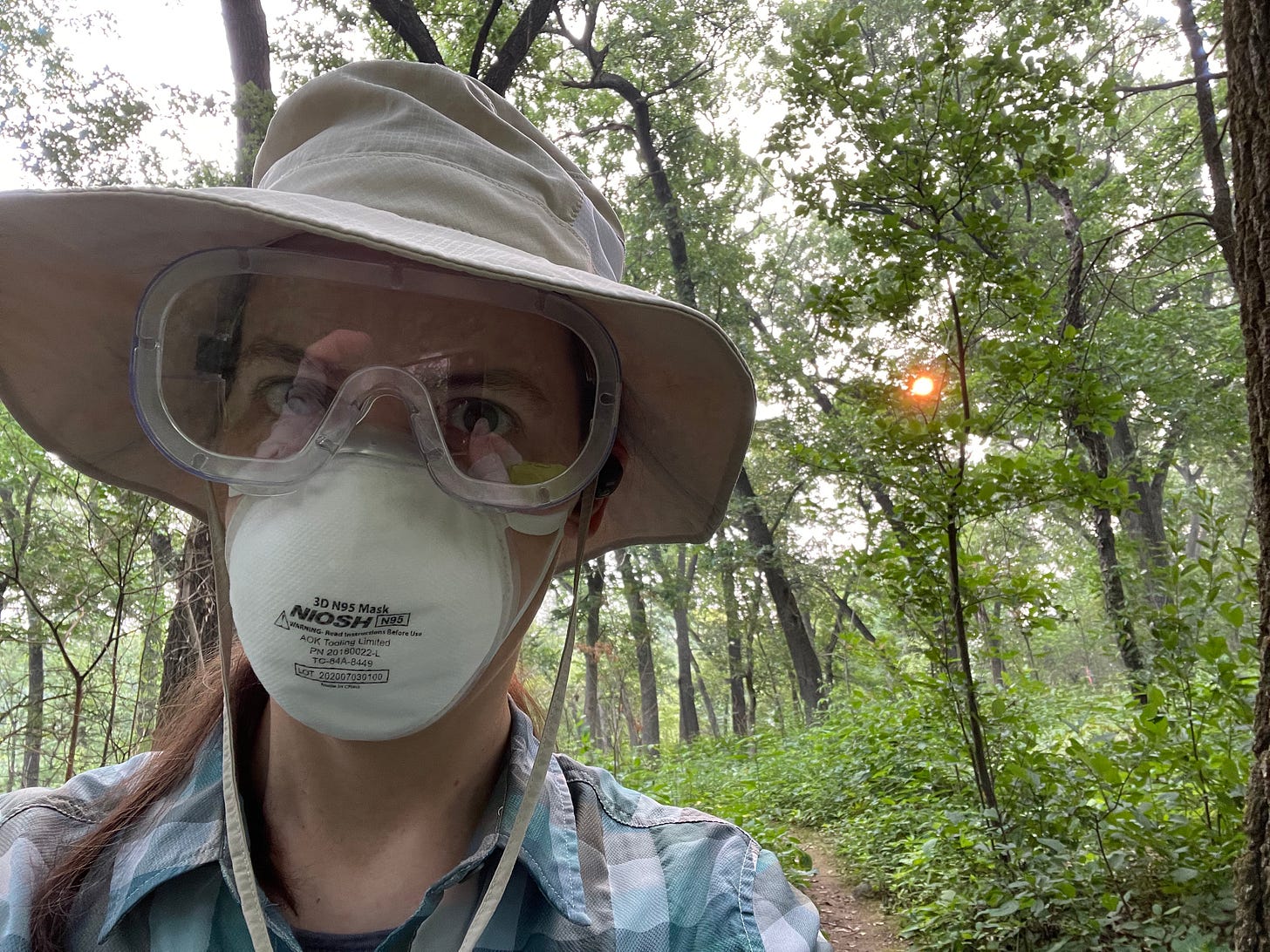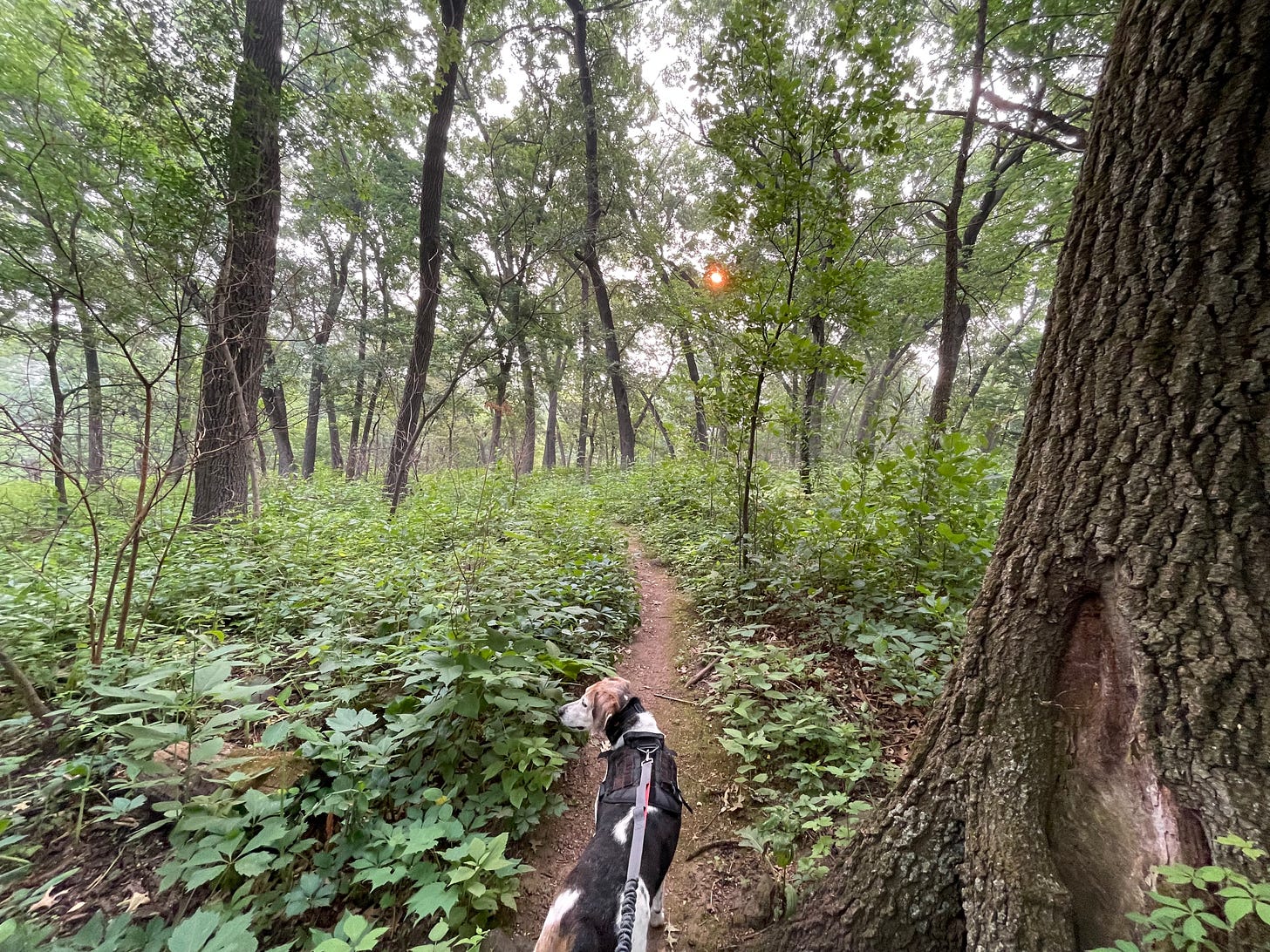Wildfire Smoke Returns to Wisconsin: Environmental Impacts on Our Health
Poor air quality from wildfire smoke returns to Wisconsin; N95 respirators protect against particulate pollution; OSHA heat rule hearing begins June 16, 2025
Today (Friday, 5/30/2025) and for the next couple of days, elevated PM2.5 and ozone levels are expected in Wisconsin due to smoke from Canadian wildfires. Public Health Madison and Dane County offers additional guidance.

Although it might seem early in the season for wildfires, climate change is lengthening the risk period for wildfires and other hazards including flooding, extreme heat, and severe storms. The Union of Concerned Scientists tracks these impacts on their Danger Season map, which currently indicates that over 41 million people in the US are facing extreme weather alerts as of today’s update.

The above photo was from June 2023, when we had recurring impacts from wildfire smoke over multi-day stretches. Last summer (2024) we had a bit of a reprieve from wildfire smoke here in Wisconsin, although air pollution and ground-level ozone production still impacted air quality.
You can check local current air quality at AirNow.gov, as well as predictions for the next couple of days. You should be aware that there are often differences between AirNow.gov and air quality index values given in mobile weather apps, which may indicate differences in measurements and sampling locations between public and private air quality monitoring networks. I recommend checking the AQI regularly, as predictions are not always reliable and the situation can change depending on multiple factors.

N95 respirators are very effective in reducing exposure to particulate matter pollutants including PM2.5.1 However, personal protective equipment is best used as part of a multilayered approach, and reducing exposure is important as well. This means reducing time spent outdoors and consulting with your doctor if you may be at high risk of health impacts or are experiencing any new or concerning symptoms. Notably, we should also reduce exposure for our pets too by keeping them indoors during poor air quality. It’s advisable to consult your veterinarian for pets who may have increased sensitivity and discuss any concerns. During times when air quality is poor, I shorten or skip dog walks and give the pup extra treat puzzles inside instead. 🐶

Importantly, regular N95 respirators only help with the particulate matter component of smoke—they are not effective for reducing ozone, which is a gas, unless they are specifically rated for ozone. Smoke and air pollution contain other toxic components as well, many of which cannot be filtered by broadly available respirators.
Poor air quality including both particulates and ozone can harm our health in both the short- and long-term. High heat and poor air quality are particularly dangerous for people with cardiovascular disease. Exercising outdoors in polluted air can be dangerous for healthy people—even if you do not experience immediate symptoms such as difficulty breathing, the increased risk of cardiovascular disease may outweigh the benefits of exercise.2 For further reading, check out this blog post from Maria Cecilia Pinto de Moura at the Union of Concerned Scientists on pollution health impacts, ozone and PM2.5 standards, and why we must take action to defend the EPA and the Clean Air Act.
Beginning June 16, 2025, OSHA is conducting a virtual public hearing on a proposed rule for heat illness prevention in the workplace. I am pleased to have the opportunity to speak at this hearing on behalf of our local group, Wisconsin Community Health Action. Our comments will support the new rule and offer suggestions to strengthen it, as well as highlighting the combined impacts of extreme heat, air quality, and infectious disease risks on worker health. You can read our written comments submitted in January 2025. My oral comments are currently scheduled for July 2, the final day of the hearing. The OSHA rulemaking website will be updated with the link to the hearing livestream, and there will be a final opportunity for written public comment after the hearing.
Stay safe and mask up to protect yourself, both indoors and out! 😷
Kodros JK, O’Dell K, Samet JM, L’Orange C, Pierce JR, Volckens J. Quantifying the Health Benefits of Face Masks and Respirators to Mitigate Exposure to Severe Air Pollution. Geohealth. 2021;5(9):e2021GH000482. doi:10.1029/2021GH000482 URL: https://www.ncbi.nlm.nih.gov/pmc/articles/PMC8438762/
Kim SR, Choi S, Kim K, et al. Association of the combined effects of air pollution and changes in physical activity with cardiovascular disease in young adults. European Heart Journal. 2021;42(25):2487-2497. doi:10.1093/eurheartj/ehab139



